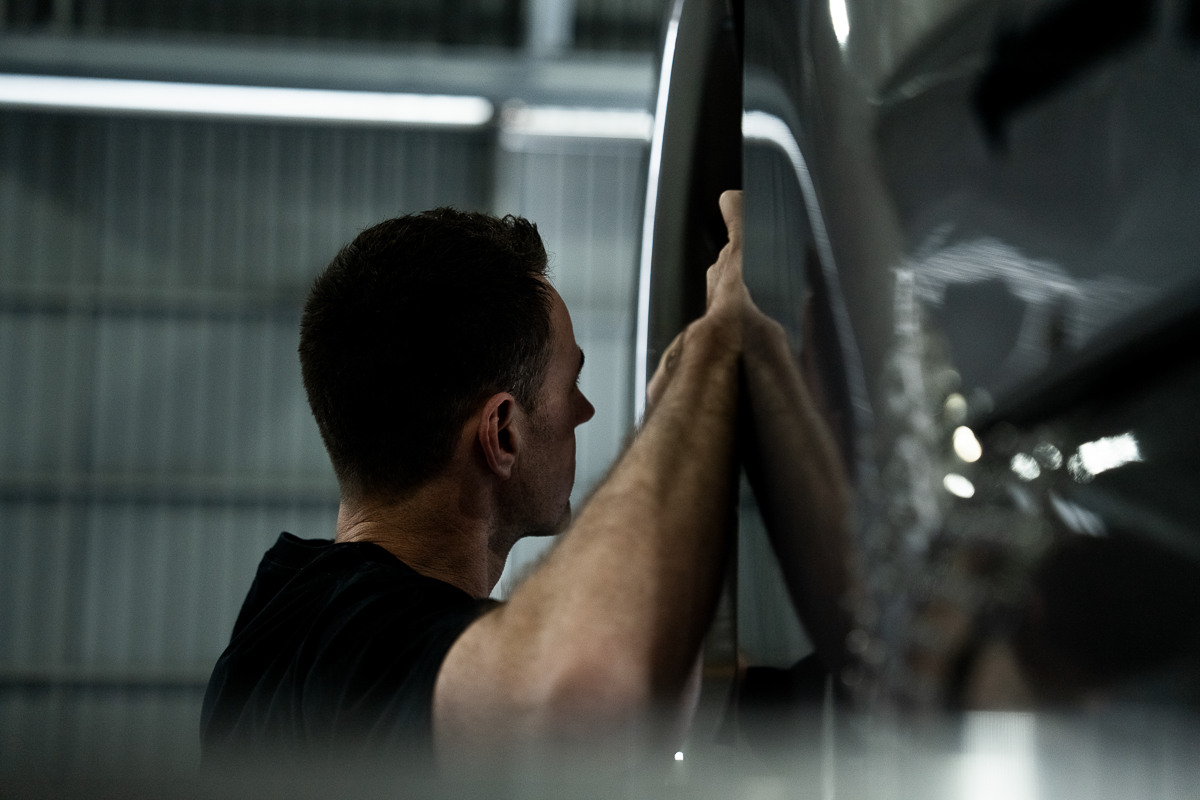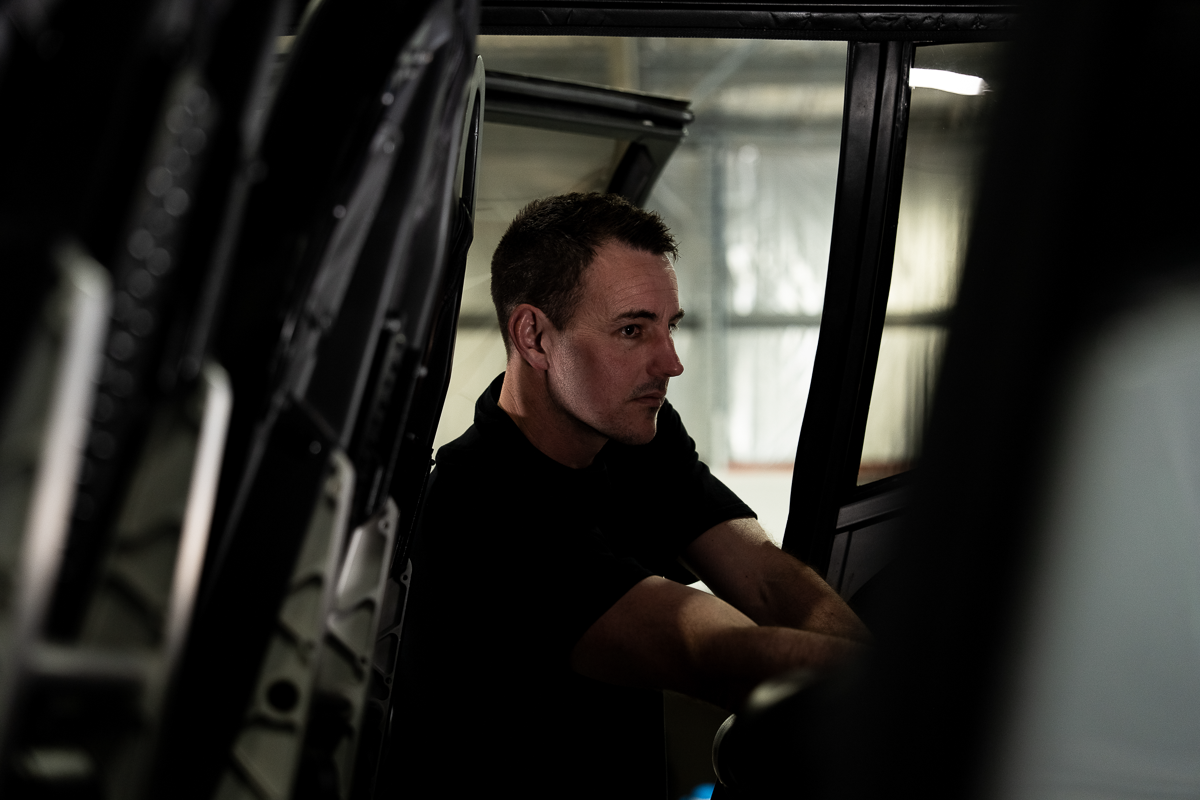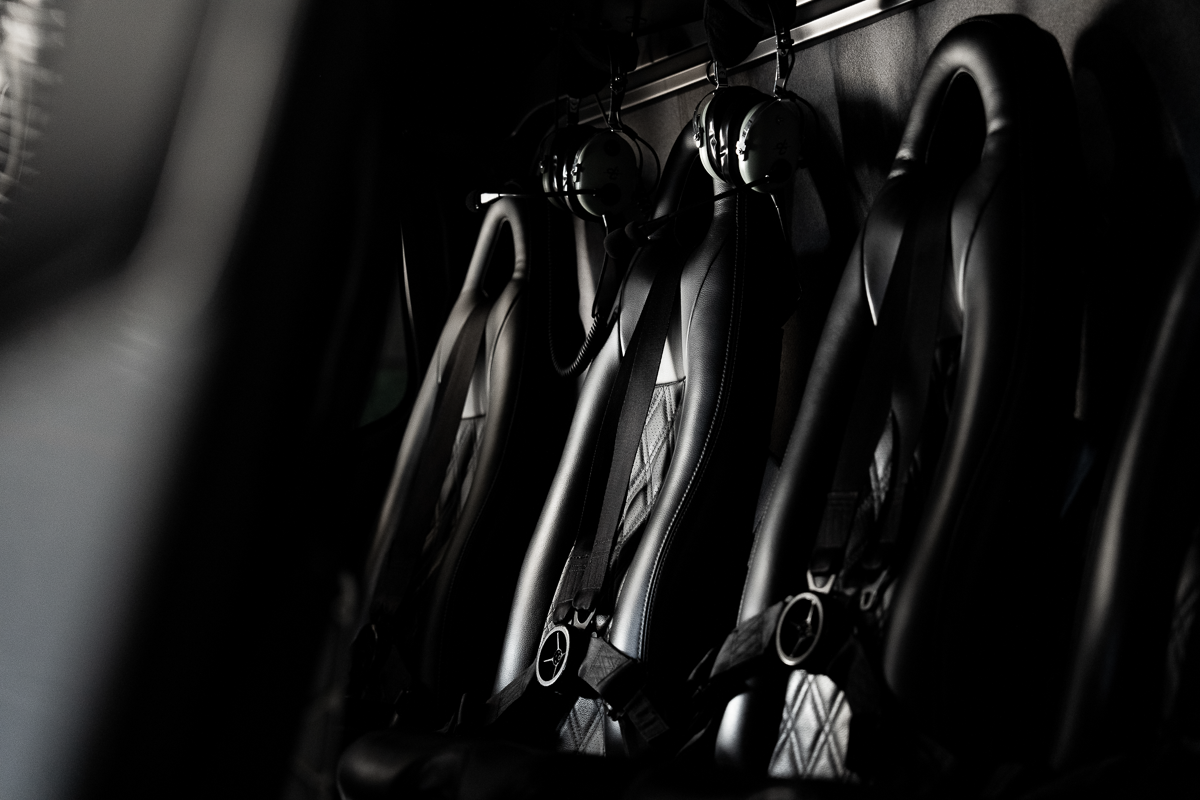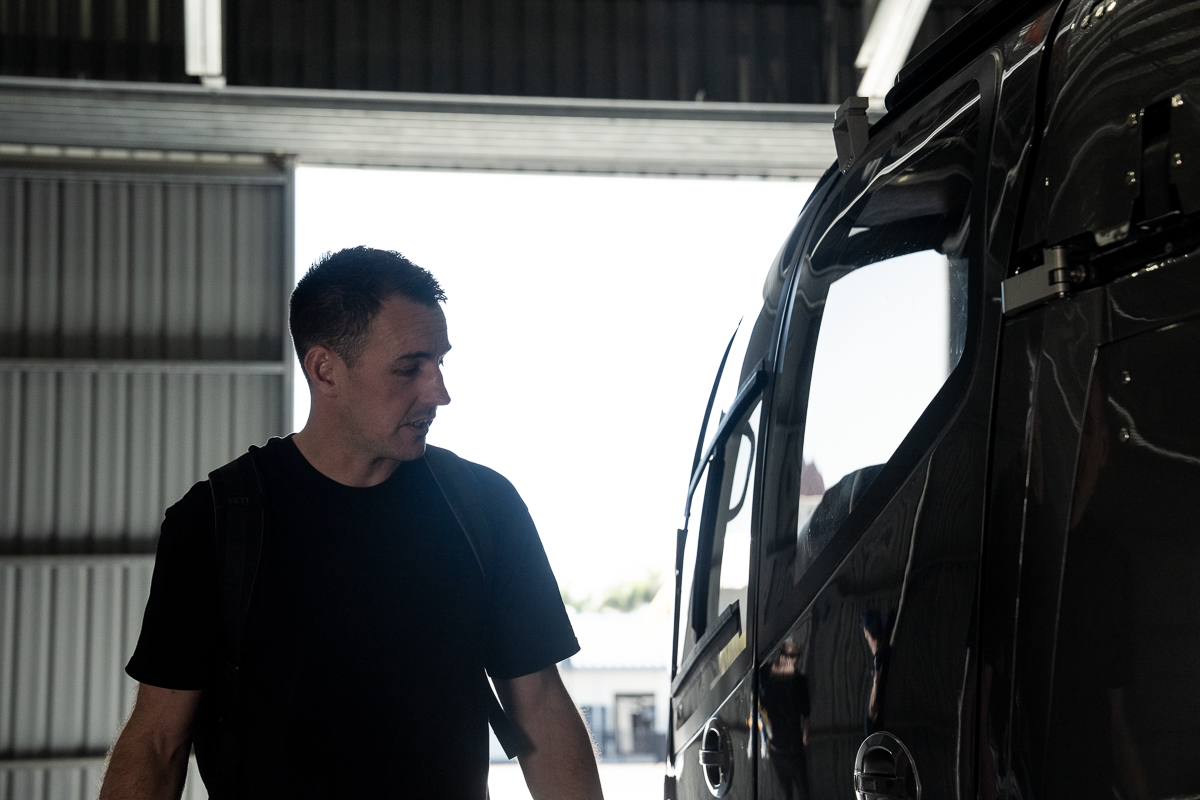EC130 Helicopter Buyer's Guide: Complete Purchase Guide for the Airbus EC130

EC130 Helicopter Buyer's Guide: Complete Purchase Guide for the Airbus EC130
Written by Ben Cometti, Licensed Helicopter Engineer & Airbus Helicopter Product Specialist

What is the Airbus EC130 Helicopter
The Airbus EC130 is a single-engine, light utility helicopter widely considered the gold standard for private ownership and tourism operations. Built on the proven AS350/H125 platform, the EC130 features a spacious cabin, exceptional safety record, and quiet Fenestron tail rotor system, making it the most popular choice among private helicopter owners in New Zealand, Australia, and worldwide.

How Much Does an EC130 Cost?
Used EC130 helicopters range from AUD $2.8 million to $6.0 million depending on age, condition, and equipment. Here's the typical pricing breakdown:
EC130 Price Ranges (AUD) by Year:
- 2020-2024 EC130: $3.8-6.0 million
- 2015-2019 EC130: $3.2-3.8 million
- 2010-2014 EC130: $2.8-3.4 million
- 2005-2009 EC130: $2.4-3.1 million
Additional Purchase Costs (AUD):
- Pre-purchase inspection: $10,000-22,000
- Import duties (if applicable): 5-10% of purchase price
- Registration and certification: $5,000-15,000
- Initial insurance: $50,000-80,000 annually
- Delivery costs: $10,000-50,000 depending on location
Why Buy an EC130? (An Engineer's Perspective)

After working on hundreds of helicopters over 18 years, the EC130 stands out as the most reliable and owner-friendly helicopter in its class. Here's why I recommend it above all others:
Exceptional Safety Record:
- Dual hydraulic systems: Redundant flight controls prevent single-point failures
- Advanced Safran Arriel 2B1 and 2D engines: Dual-channel FADEC with automatic engine management
- Emergency systems: EBCAU system ensures engine continues running even during complete electrical failure
- Fenestron tail rotor: Enclosed design mitigates the danger of traditional tail rotor configurations.
Operational Advantages:
- Spacious 6-passenger cabin: Largest in its class with panoramic windows
- Quietest operation: Fenestron system reduces noise by 50% compared to conventional tail rotors
- Exceptional stability: Superior handling characteristics in all weather conditions
- No runway required: Land virtually anywhere with 30-foot clearance
- Get anywhere, fast: Cruise at 140-150 MPH
Maintenance Benefits:
- Proven reliability: Based on the AS350 platform with over 6,000 aircraft delivered
- Excellent parts support: Airbus has the best supply chain in the industry
- Predictable maintenance: 600-hour and annual inspection cycles
- Global service network: Authorized service centers worldwide
EC130 Models and Variants: Which Should You Buy?
EC130 B4 (First Generation):
- Production years: 2001-2014
- Engine: Arriel 2B1 (700 shp)
- Key features: Standard avionics, basic interior
- Best for: Smart buyers seeking proven reliability
- Typical price: AUD $2.4-3.4 million
EC130 T2 (Latest Model):
- Production years: 2012-present
- Engine: Arriel 2D (952 shp with improved fuel efficiency)
- Key features: Glass cockpit, enhanced avionics, improved interior
- Best for: Buyers wanting latest technology and features
- Typical price: $3.2-5.2 million
My Recommendation:
For most buyers, I recommend the EC130 B4 from 2008-2012. These aircraft offer the best value proposition with proven reliability, modern safety features, and reasonable pricing. The T2 is excellent but commands a premium that may not justify the additional features for private owners.
Where to Buy a Used EC130
Authorized Dealers (Recommended):
- Airbus Helicopters dealers: Factory-authorized sales and support
- Established helicopter brokers: Specialized aviation sales companies
- Fractional ownership exits: Well-maintained aircraft from professional programs
Online Marketplaces:
- Controller.com: Largest aviation marketplace
- AircraftForSale.com: Comprehensive helicopter listings
- Trade-A-Plane: Traditional aviation classified platform
- Helicopter Association International: Industry-specific listings
Geographic Considerations:
- North America: Largest used market, competitive pricing
- Europe: High-quality aircraft, strict maintenance standards
- Australia/New Zealand: Limited inventory but excellent condition
- Asia: Growing market with varying maintenance standards
Red Flags to Avoid:
- Private sellers with limited aviation knowledge
- Aircraft with incomplete maintenance records
- Dealers unwilling to allow pre-purchase inspections
- Prices significantly below market value or on market for a long time (usually indicates hidden problems)
The Most Critical Part of Any EC130 Purchase: The Logbooks
Here's what most buyers don't understand: "I believe that the value of any aircraft is only as good as the paperwork and records that support it." This is why I spend a good amount of time studying those records during every inspection I perform.
Why Maintenance Records Matter More Than Anything:
The logbooks tell the aircraft's real story. A shiny paint job and clean interior mean nothing if the maintenance records reveal:
- Deferred maintenance items that will cost you later
- Missing documentation that can ground the aircraft
- Poor maintenance practices that compromise safety
- Accident history that affects value and insurability
- Component times that indicate upcoming major expenses
- Undocumented maintenance modifications with no certification
What I Look for in the Records:
- Complete documentation: Every flight hour and maintenance action recorded from day one
- Service bulletin compliance: Critical safety modifications completed
- Component traceability: Full history of major parts and overhauls
- Regulatory compliance: All airworthiness directives properly addressed
- Quality indicators: Evidence of professional maintenance practices
Remember: you're not just buying a helicopter—you're buying its entire maintenance history. Never compromise on this aspect of your purchase.
EC130 Pre-Purchase Inspection: What to Look For

Essential Inspection Areas:
1. Maintenance Records Review
This is where I spend 50% of my inspection time. The records review is absolutely critical because:
- Complete logbooks: Every flight hour and maintenance action documented
- Service bulletin compliance: Critical safety modifications completed
- Component times: Remaining life on major components
- Accident history: Any damage or incident reports
- Regulatory compliance: All airworthiness directives (ADs) completed
2. Airframe Inspection
Key areas I examine during walkaround:
- Fuselage skins: Check for cracks, corrosion, or repair evidence
- Tail boom junction: Critical stress area with known service bulletin requirements
- Landing gear: Corrosion assessment, especially in coastal environments
- Windows and doors: Cracks, crazing, or delamination issues
- Paint condition: Indicates overall care and maintenance quality
3. Main Rotor System
The heart of the helicopter requires detailed inspection:
- Main rotor blades: Leading edge condition, paint quality, delamination signs, “Hangar rash” contact damage from ground handling
- Main gearbox: Oil quality, leak evidence, component condition
- Flight controls: Bearing condition, excessive play, corrosion
- Frequency adapters: Critical components requiring careful examination
- Swashplate assembly: Wear patterns and component condition
4. Engine Inspection
The Arriel engine represents at least 40% of the aircraft's value:
- Borescope inspection: Internal compressor and turbine examination
- Oil analysis: Metal contamination and engine health indicators
- Chip detectors: Evidence of internal wear or damage
- External condition: Leak evidence, corrosion, component condition
- Time remaining: Hours until next overhaul requirement
5. Tail Rotor and Drive System
The Fenestron system requires specialized knowledge:
- Tail rotor blades: All 10 blades inspected for damage, wear and rotational free play
- Tail rotor gearbox: Oil quality, leak evidence, case corrosion, chip detector condition
- Drive shaft: Alignment and bearing condition, condition of couplings, excessive balance weights
- Shroud condition: Structural integrity and paint quality
Inspection Costs and Timeline:
- Pre Purchase Inspection: $10,000-20,000 (2-3 days)
- Comprehensive inspection: $20,000-30,000 (4-5 days)
EC130 Buying Process: Step-by-Step Guide

Phase 1: Preparation (2-4 weeks)
- Define requirements: Passenger capacity, range, equipment needs
- Establish budget: Purchase price plus first-year operating costs
- Arrange financing: Aviation lenders require specialized expertise
- Select inspection team: Licensed engineer familiar with EC130s
- Research insurance: Obtain preliminary quotes and pilot requirements
Phase 2: Aircraft Search (4-8 weeks)
- Market research: Compare available aircraft and pricing
- Initial screening: Review specifications and maintenance status
- Seller contact: Verify ownership and maintenance history
- Documentation review: Request status reports and records
- Physical inspection: Schedule detailed pre-purchase inspection
Phase 3: Due Diligence (2-3 weeks)
- Pre-purchase inspection: Comprehensive technical evaluation
- Records audit: Complete maintenance and legal review
- Market valuation: Confirm fair market pricing
- Negotiation: Price adjustment based on inspection findings
- Contract execution: Purchase agreement with appropriate contingencies
Phase 4: Closing Process (2-4 weeks)
- Final inspection: Confirm aircraft condition hasn't changed
- Insurance binding: Activate coverage before delivery
- Registration transfer: Complete legal ownership change
- Payment processing: Wire transfer through escrow service
- Delivery acceptance: Final walkaround and documentation
Phase 5: Post-Purchase Setup (2-4 weeks)
- Hangar arrangements: Secure appropriate storage facility
- Maintenance planning: Schedule upcoming inspections
- Pilot arrangements: Hire or contract qualified pilots
- Operational setup: Flight planning and logistics systems
EC130 Inspection Checklist: Critical Items
Mandatory Service Bulletins:
- SB 05.00.04: Tail boom junction reinforcement (critical safety item)
- SB 25.00.28: Main rotor mast inspection requirements
- SB 29.00.15: Tail rotor blade inspection procedures
- SB 67.00.09: Flight control system modifications
Component Life Limits:
- Main rotor blades: 20,000 flight hours
- Tail rotor blades: 10,000 flight hours
- Main gearbox: 3,000 hours between overhauls (or 24 Years)
- Engine: 3,500 hours on each module. Beware the 15 year inspections on Module M03
- Main Rotor Starflex: 2,400 or 3,000 hours depending on part number
Common Issues to Watch For:
- Tail boom corrosion: Especially in coastal environments
- Main rotor blade paint: Delamination exposes composite structure
- Fenestron blade erosion: Leading edge wear from debris or erosion
- Engine oil leaks: Common at accessory gearbox connections
- Avionics obsolescence: Older systems may need updates
EC130 Operating Costs: What to Budget
Annual Operating Costs (100 hours):
- Fuel: $35,000-45,000 (depending on fuel prices)
- Maintenance: $80,000-120,000 (including reserves)
- Insurance: $50,000-80,000 (varies by pilot experience)
- Hangar: $30,000-60,000 (location dependent)
- Pilot: $80,000-120,000 (if employing full-time)
- Miscellaneous: $15,000-25,000 (charts, training, etc.)
Total annual cost: $290,000-450,000 for 100 hours of operation
Major Maintenance Reserves:
- Engine overhaul: $850,000-1,000,000 every 3,500 hours
- Main gearbox overhaul: $400,000-500,000 every 3,300 hours
- 12 Year Inspection: $100,000-150,000 every 12 Years
- 600FH//24Month Inspection: $60,000-80,000 every 2 years or 600 hours
Consider Fractional Ownership: A Smarter Alternative for Most Buyers

Before committing to full EC130 ownership, seriously consider fractional ownership. After helping develop fractional programs, I can tell you that most private owners would be better served by owning a 25% share rather than a whole helicopter.
Why Fractional Makes Sense for EC130s:
- Cost reduction: $875,000 investment vs. $3.5 million
- Professional management: Licensed engineers handle all maintenance
- No surprise costs: Predictable monthly fees vs. unexpected repair bills
- Better utilization: Share 75 hours annually vs. owning 100% and flying 50 hours
- Quality aircraft: Access to professionally maintained EC130s
- Fair scheduling: Advanced booking systems ensure equal access
When Full Ownership Makes Sense:
- High utilization: Flying 200+ hours annually
- Specific requirements: Custom configurations or equipment
- Commercial operations: Charter or specialized missions
- Complete control: Need total operational authority
My honest advice: Unless you're flying 200+ hours annually, fractional ownership provides better value and eliminates the complexity of full ownership. You get all the benefits of EC130 ownership without the headaches I've seen plague private owners for nearly two decades.
Financing an EC130 Purchase
Aviation Lenders:
- Specialized aviation banks: Best rates and terms
- Traditional banks: Limited helicopter experience
- Manufacturer financing: Airbus Financial Services
- Leasing companies: Alternative to traditional ownership. Expect to pay $2,200 to $3,500 per hour for a minimum of 300 hours per year
Typical Financing Terms:
- Down payment: 20-30% of purchase price
- Interest rates: 6-10% depending on credit and terms
- Loan terms: 10-20 years maximum
- Personal guarantees: Usually required for private purchases
Documentation Requirements:
- Financial statements: Personal and business
- Tax returns: 3 years minimum
- Insurance quotes: Comprehensive coverage required
- Aircraft appraisal: Independent valuation required
EC130 Insurance Considerations
Coverage Requirements:
- Hull coverage: Full replacement value
- Liability: $10-50 million typical
- Passenger coverage: $1-5 million per seat
- Ground risk: Hangar and ground operations
Pilot Requirements:
- Minimum experience: 1,000 total hours, 100 turbine hours
- Type rating: EC130 or AS350 specific training
- Recurrent training: Annual requirements
- Medical certificate: Current aviation medical
Premium Factors:
- Pilot experience: More experience = lower rates
- Aircraft age: Newer aircraft cost more to insure
- Usage: Commercial vs. private operations
- Location: Hangar location affects rates
Common EC130 Buying Mistakes to Avoid

1. Skipping Professional Inspection
Never buy an EC130 without a comprehensive pre-purchase inspection by a licensed engineer. I've seen buyers save $10,000 on inspection costs only to discover $500,000 in hidden problems.
2. Ignoring Maintenance Records
Complete, accurate maintenance records are essential. As I always tell clients: "The value of any aircraft is only as good as the paperwork and records that support it." Missing logbooks or incomplete documentation can ground the aircraft and destroy its value.
3. Underestimating Operating Costs
Many buyers focus only on purchase price. Annual operating costs often exceed $400,000—budget accordingly.
4. Inadequate Insurance Planning
Aviation insurance is complex and expensive. Get quotes early and understand pilot requirements before purchase.
5. Poor Hangar Planning
Quality hangar space is scarce and expensive. Secure hangar arrangements before taking delivery.
6. Not Considering Fractional Ownership
The biggest mistake I see is buyers assuming they need full ownership. Most private owners would be happier and wealthier with fractional ownership.
EC130 Market Trends and Future Value
Current Market Conditions:
- Strong demand: EC130s hold value better than most helicopters
- Limited supply: Production has slowed in recent years, creating scarcity
- Price stability: Values have remained steady despite economic uncertainty
- Geographic variations: Prices vary significantly by region
Value Retention Factors:
- Maintenance quality: Well-maintained aircraft hold value best
- Equipment level: Modern avionics and equipment add value
- Service bulletin compliance: Up-to-date aircraft command premiums
- Market reputation: EC130's reputation supports strong resale values
Future Outlook:
- Continued demand: Tourism and private markets remain strong
- Parts support: Airbus committed to long-term support
- Regulatory stability: No major regulatory changes expected
- Technology updates: Retrofit opportunities maintain relevance
My Professional Recommendation
After 18 years of helicopter engineering and hundreds of inspections, I can confidently say the EC130 is the best choice for high level private helicopter ownership. However, buying the right aircraft requires expertise, patience, and thorough due diligence.

Key Success Factors:
- Hire experienced professionals: Use licensed engineers and aviation attorneys
- Focus on the records: Remember, "the value of any aircraft is only as good as the paperwork and records that support it"
- Don't rush the process: Good aircraft are worth waiting for
- Budget realistically: Include all costs, not just purchase price
- Consider fractional ownership: Most buyers would be better served by shared ownership
- Plan for the long term: Consider 5-10 year ownership costs
- Maintain professionally: Use authorized service centers or reputable organisations experienced on type only
When to Walk Away:
- Incomplete maintenance records
- Evidence of accident damage
- Deferred maintenance items
- Seller unwilling to allow inspection
- Price too good to be true
Conclusion: Your EC130 Purchase Journey
Buying an EC130 is one of the most rewarding investments you can make, but it requires careful planning and professional guidance. The EC130's combination of safety, reliability, and performance makes it the gold standard for private helicopter ownership.
As someone who's dedicated his career to helicopter engineering, I've seen the difference between smart purchases and expensive mistakes. The key is working with experienced professionals who understand the EC130 inside and out, and honestly evaluating whether full ownership or fractional ownership better serves your needs.
Whether you're buying your first helicopter or upgrading from another aircraft, the EC130 will provide years of safe, reliable service—if you buy the right one and choose the right ownership model. Take your time, do your homework, and don't hesitate to walk away from aircraft that don't meet your standards.
Ready to start your EC130 journey? Contact experienced helicopter professionals who can guide you through the process, help you evaluate full vs. fractional ownership, and ensure you find the perfect solution for your aviation needs.
Ben Cometti is a licensed helicopter engineer with 18 years of experience specializing in Airbus Helicopter maintenance, inspection, and operations. He has performed hundreds of pre-purchase inspections and helped clients acquire EC130s across New Zealand, Australia, and internationally. Ben's expertise ensures buyers make informed decisions and avoid costly mistakes.
Contact Ben@helishare.net for EC130 pre-purchase inspections, buying consultation, and fractional ownership evaluation.



.png)
.png)
.png)